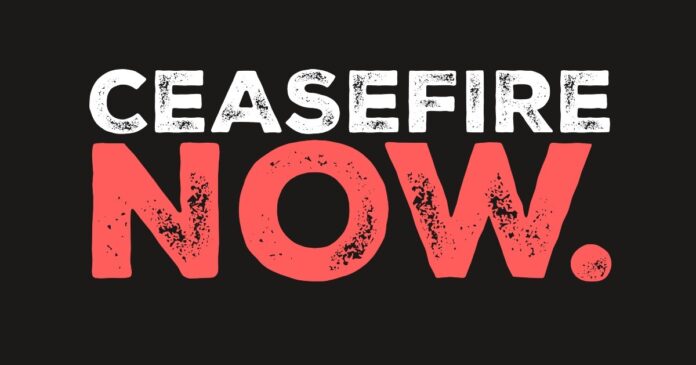India and Pakistan concluded a significant diplomatic achievement that saw them agree to a ceasefire, which would bring an end to weeks of escalation of militancy, which involved attacks on military bases, civilian settlements, and important infrastructure within the Line of Control. President Donald Trump officially declared the U.S.-led ceasefire on 10 May following a “long night of diplomacy,” which he stated.
The initial ceasefire agreement was enforced at 5 p.m. IST, confirmed by officials from both countries. Still, both nations provided separate information regarding the role the United States played in delivering the ceasefire.
The Declaration by President Trump and US Mediation Efforts.
Trump tweeted on Truth Social that both India and Pakistan had agreed to a “FULL AND IMMEDIATE CEASEFIRE”. He commended “common sense and great intelligence” on the part of both sides and thanked the work done by Secretary of State Marco Rubio and Vice President JD Vance.
Rubio also said that the countries had agreed to begin talks on a number of issues at a neutral venue, although not confirmed by Indian officers.
The Pakistani authorities, including the Prime Minister Shehbaz Sharif and Foreign Minister Ishaq Dar, were thankful to the U.S for its proactive part in mediation, unlike Indian’s more backing observation of the interference. Culture Secretary of India Vikram Misri revealed that the ceasefire was agreed to only by the two countries’ side, where military channels were used, with the most critical communication taking place between the Directors General of Military Operations (DGMOs) in phone calls.
An official Indian statement reiterated that no talks on broader issues had been agreed upon and emphasized that the ceasefire was strictly a bilateral initiative.
Also read: IMF Approves $1.4B Loan for Pakistan Despite India’s Warning
Background: Operation Sindoor and Retaliatory Strikes
The ceasefire follows Operation Sindoor, a large-scale military operation launched by India earlier in the week in response to a deadly massacre of tourists in Indian-controlled Kashmir, which New Delhi blamed on Pakistan-based militants. Islamabad denied any involvement and retaliated with Operation Banyan al-Marsous, a coordinated strike on Indian military installations.
According to CNN’s live updates, Saturday saw some of the most intense confrontations between the two nuclear-armed rivals in recent memory, with missile attacks, drone strikes, and civilian casualties reported on both sides. Pakistan claimed 11 people, including a child, were killed in Indian shelling, while India confirmed the death of a senior government official in Pakistani retaliation.
Global Reactions and Cautious Optimism
The announcement of the ceasefire was welcomed internationally. The UK Foreign Secretary David Lammy called it a “hugely welcome step,” while the EU’s High Representative Kaja Kallas emphasized the importance of ensuring that the ceasefire is respected and sustained. China and the G7 nations also called for restraint and supported diplomatic efforts to avoid further escalation.
Despite the agreement, analysts warn that the underlying tensions, particularly over Kashmir, remain unresolved. The conflicting narratives on the U.S.’s role also highlight ongoing diplomatic sensitivities in the region.
Looking Ahead: Fragile Peace or New Beginning?
Though the ceasefire marks a critical pause in hostilities, it is unclear whether it will evolve into a sustained peace process. India’s reluctance to publicly acknowledge foreign mediation reflects its longstanding policy of bilateralism on regional disputes, while Pakistan sees international involvement as essential for conflict resolution.
There is currently no confirmed schedule for future peace talks beyond a planned follow-up discussion between the DGMOs of both countries on Monday. Whether this fragile truce can hold will depend on political will, public pressure, and the absence of further provocations.








